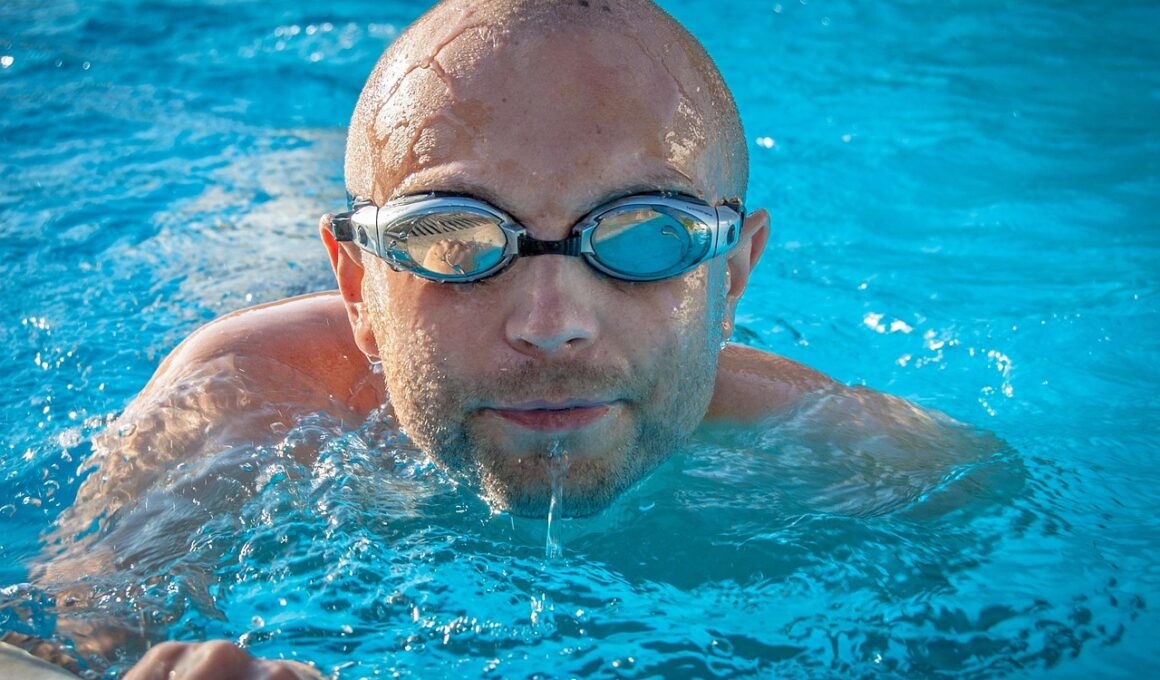Ancient Swimming Techniques and Their Influence on Modern Records
Swimming has a rich history that spans centuries and civilizations. From the ancient Egyptians, who used swimming as a practical survival skill to navigate their waters, to the Greeks and Romans, who incorporated it into their athletic competitions, swimming has always held significance. Early swimming techniques often focused on efficiency and speed, mimicking the natural movements of animals in the water. This approach laid the groundwork for modern swimming strokes. The ancient art of swimming was documented in various texts, with references found in works like the Iliad. Techniques such as the crawl and breaststroke have roots in these early methods, and they continue to evolve. The importance of swimming was further underscored by its inclusion in the ancient Olympics. Competitors trained rigorously, turning swimming into a serious competitive sport. These historical methods and practices still resonate today, influencing training regimens and competitive standards. As a consequence, many contemporary records stem from these ancient techniques that capture the essence of speed, style, and efficiency, showcasing how time-honored practices contribute to modern success in the sport.
The transition from ancient swimming techniques to modern practices reveals a fascinating evolution. In the early days, swimmers predominantly used natural strokes tailored to the conditions they faced. As the competitive landscape evolved, so did the techniques used in swimming. For instance, as nations began to adopt organized swimming competitions, the focus shifted to refining and perfecting strokes for speed and endurance. The introduction of the freestyle stroke marked a significant milestone in this evolution. Swimmers learned to use their entire body in a streamlined position to bolster speed. Innovations like the flip turn and the high-elbow catch became standards in competitive swimming. These techniques, rooted in ancient practices, illustrate the adaptability of the sport. Coaches and athletes continually analyze past methods to enhance modern performance. Furthermore, swimming records demonstrate how far this sport has come; what was once thought impossible has become routine for elite athletes. Many of today’s world records echo the techniques of ancient swimmers, proving that the foundations laid by predecessors remain relevant, underpinning the modern achievements of today’s best swimmers.
Now, let’s delve deeper into specific ancient civilizations that significantly impacted swimming history. The Greeks are often lauded for their athletic prowess, and swimming was no exception. They established specific methods that influenced later swimming strokes and techniques. Contrastingly, the Romans embraced swimming in public facilities, promoting accessibility to all. These baths served as social hubs where swimming techniques were shared and practiced broadly. Additionally, ancient Chinese texts reveal that swimming was not only practical for transportation but also crucial for military strategies. Their unique styles emphasized endurance and power, factors that are equally essential for contemporary competitive swimmers. African and Aboriginal societies also practiced varied swimming techniques that emphasized survival and leisure. These practices across cultures contributed to the collective knowledge surrounding swimming. Traditional practices from Africa to Asia influenced regional swimming styles even in modern times. Thus, an understanding of these varied historical approaches proves invaluable in tracing the evolution of swimming techniques and records. They interconnect in fascinating ways, underscoring the global influence of diverse ancient practices in shaping today’s swimming landscape.
Impact of Technology on Modern Swimming
As we explore the influence of ancient swimming techniques, we must acknowledge the role of technology in the sport today. Technological advancements have transformed how swimmers train, compete, and improve their techniques. Innovations in swimwear materials have led to the development of suits that reduce drag and enhance buoyancy. For instance, the introduction of polyurethane suits dramatically improved record-breaking times, a phenomenon that changed competitive swimming. Moreover, countless high-tech training aids have emerged, including wearable devices that analyze performance metrics in real-time. Swimmers can now track their stroke rates, heart rates, and other crucial statistics during training sessions. This data, rooted in historical technique analysis, enables them to refine their approaches further. Additionally, advancements in video analysis technology allow athletes and coaches to scrutinize movements and correct errors, echoing the meticulous observation that ancient swimmers would have undergone. The interplay between innovative technology and historic techniques underscores how progress preserves the essence of swimming while enhancing performance. As such, technology not only advances modern swimming records but also connects present practices to ancient methodologies.
Walking through the timeline of swimming reveals a tapestry of records that highlight human achievement. From the earliest documented records of swimming events in ancient civilizations to the Olympic Games, swimming has consistently taken center stage as a benchmark of athleticism. Over the past century, swimming records have been obliterated as swimmers have broken barriers that once seemed unapproachable. These advancements can often be traced back to the evolution of training methods and a deeper understanding of hydrodynamics, informed by both ancient practices and modern research. For instance, the adoption of pool technology has innovated training, creating an environment where athletes can concentrate on perfecting their strokes. The world of professional swimming is driven by competition; every aspect is analyzed meticulously, from athlete nutrition to recovery techniques. This relentless pursuit of excellence continues to push the boundaries of what is achievable. Furthermore, the societal emphasis on competitive swimming aims for success not only on the national level but also on the global stage, demonstrating a legacy of records informed by decades of incremental improvement influenced by historical techniques.
The Role of Coaches in Preserving Techniques
Coaches have always played an integral role in shaping swimming techniques and preserving the wisdom passed down from sailors in ancient civilizations. An excellent coach emphasizes the importance of foundational strokes while adapting them to modern training conditions and techniques. They serve as the bridge connecting centuries of swimming knowledge with contemporary practice. Many coaches draw inspiration from ancient methodologies, emphasizing natural body movements and fluidity. This connection helps to instill an understanding of the sport’s history in younger athletes, making them appreciate the roots of their practices. Furthermore, modern coaching strategies often draw on principles found in ancient texts, blending tradition with cutting-edge sports science. Elite coaches routinely study video analysis that captures ancient-style strokes alongside advanced techniques, revealing opportunities for amalgamation. This approach fosters a well-rounded swimmer, grounded in historical technique while remaining open to progress and innovation. As coaches impart these lessons, they ensure that vital swimming history remains integral to training, inspiring athletes to embrace the evolution from ancient techniques toward achieving modern swimming records. History and modernity coexist in swimming through their guidance.
In conclusion, the significance of ancient swimming techniques resonates throughout the history of the sport, continuing to influence modern records today. These techniques, initially borne out of necessity and survival, have evolved into sophisticated, efficient methods practiced by elite athletes across the globe. The journey of swimming, from ancient times to the present, showcases the universal appeal of the water and the innate human desire to excel. Both the evolution of techniques and the integration of advanced technology encapsulate swimming’s dynamic nature. The connection to ancient practice, preserved and evolved through time, ensures that modern swimmers remain vigilant about their technique while pursuing excellence. Today’s records stand on the shoulders of those who swam centuries ago, with each accomplished athlete representing a legacy of improvement. As swimmers incorporate modern strategies while respecting historical wisdom, they navigate a rich tapestry seemingly informed by all who swam before them. Thus, the pursuit of achieving and breaking records continues not only as a personal ambition but also as an homage to the swimming journey that ties together cultures, eras, and technological advancements.
As someone appreciates the art of swimming, understanding its historical context and development enriches the experience. Embracing traditions while pursuing modern records reflects the spirit of swimming, underlined by a continuous quest for excellence. The narrative of swimming transcends mere technique; it encompasses a collective journey of all who have contributed to it, assuring that each leap into the water pays tribute to history. By merging their respect for the past with determination for future achievements, today’s swimmers continue the legacies established by those long ago. As swimming looks toward a future filled with potential records broken, athletes honor the techniques and teachings from ancient civilizations that guide them through their lifelong relationship with water. This dance between heritage and progress remains a vital aspect of swimming, making every race not only a contest but also a celebration of its rich historical narrative.


